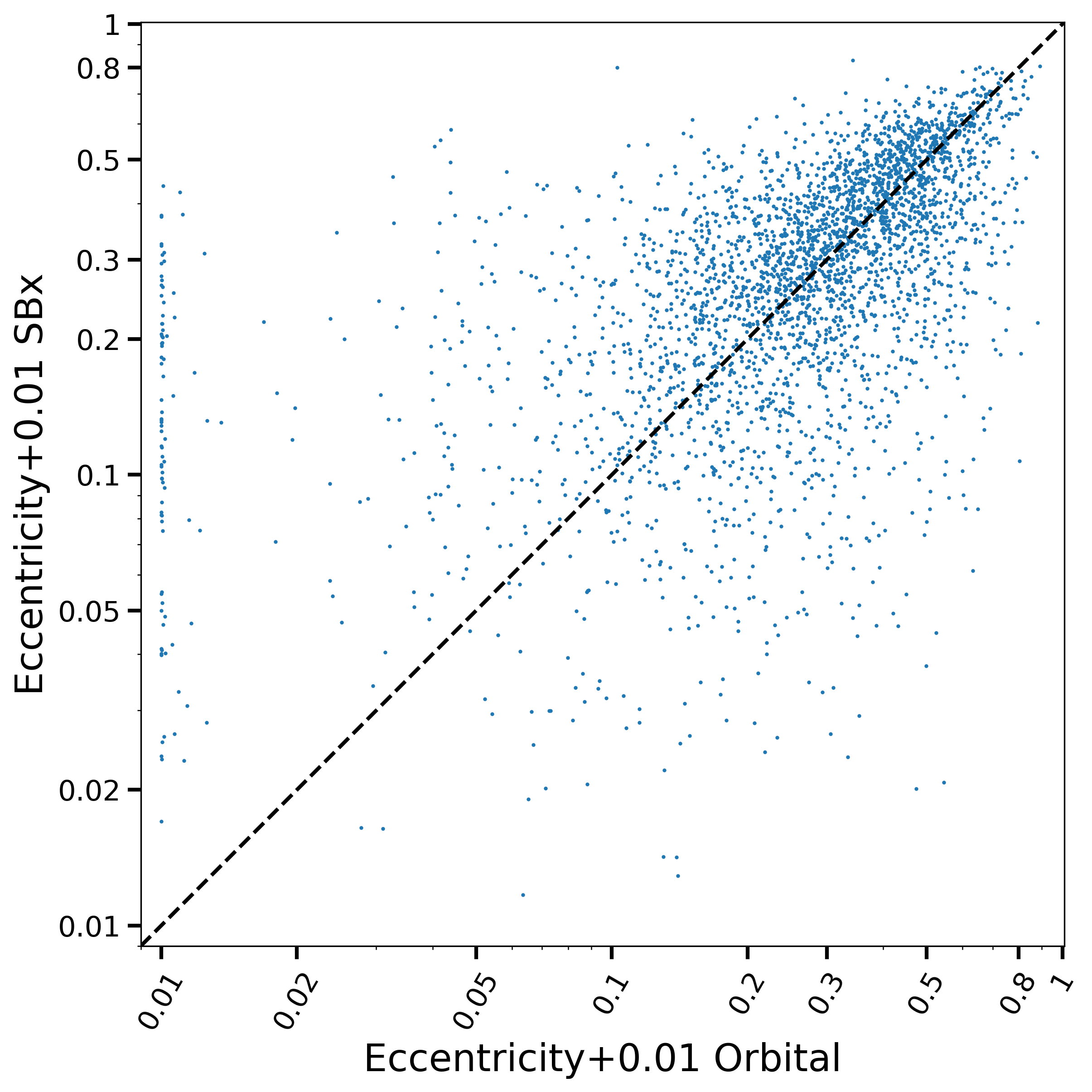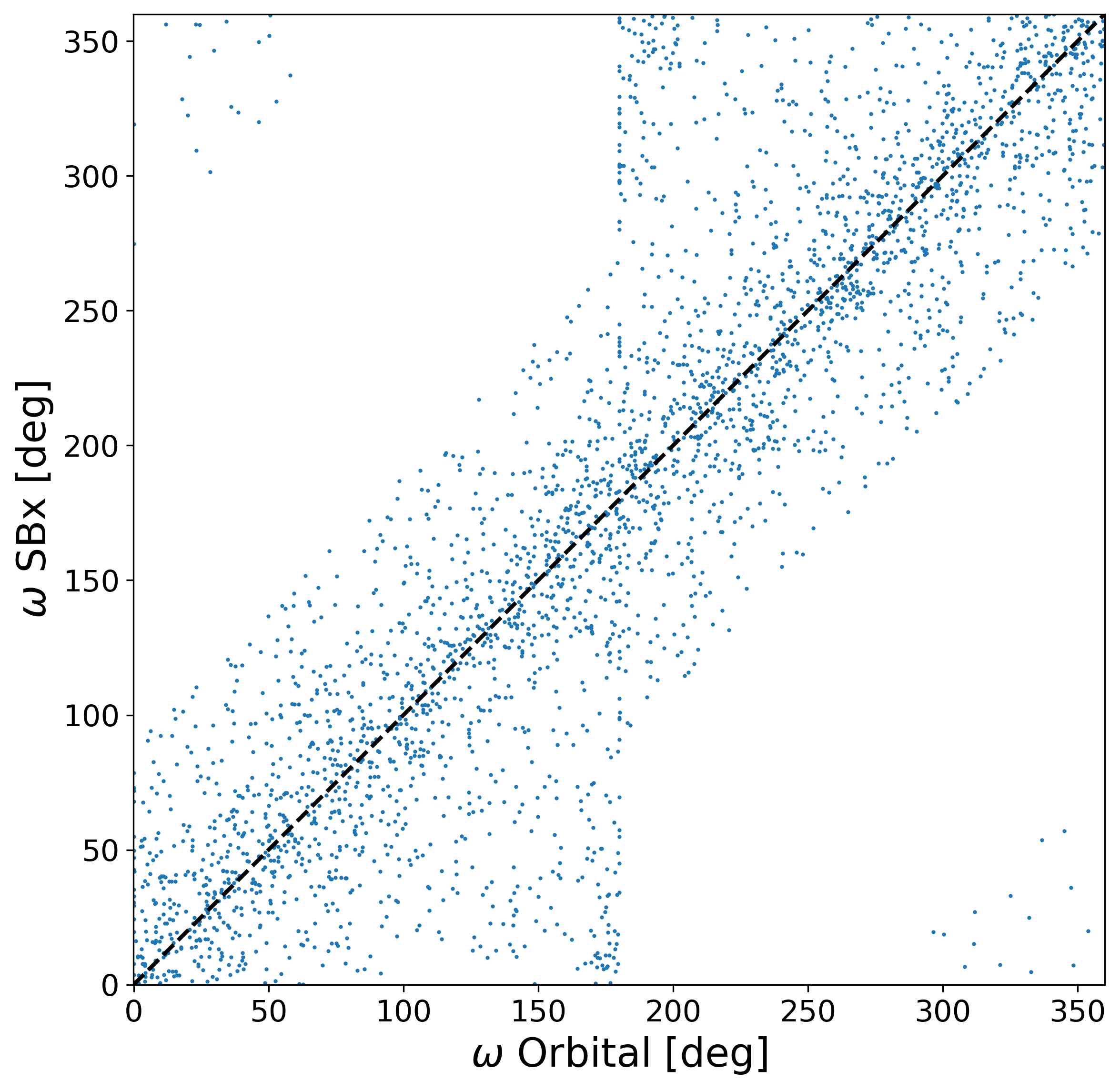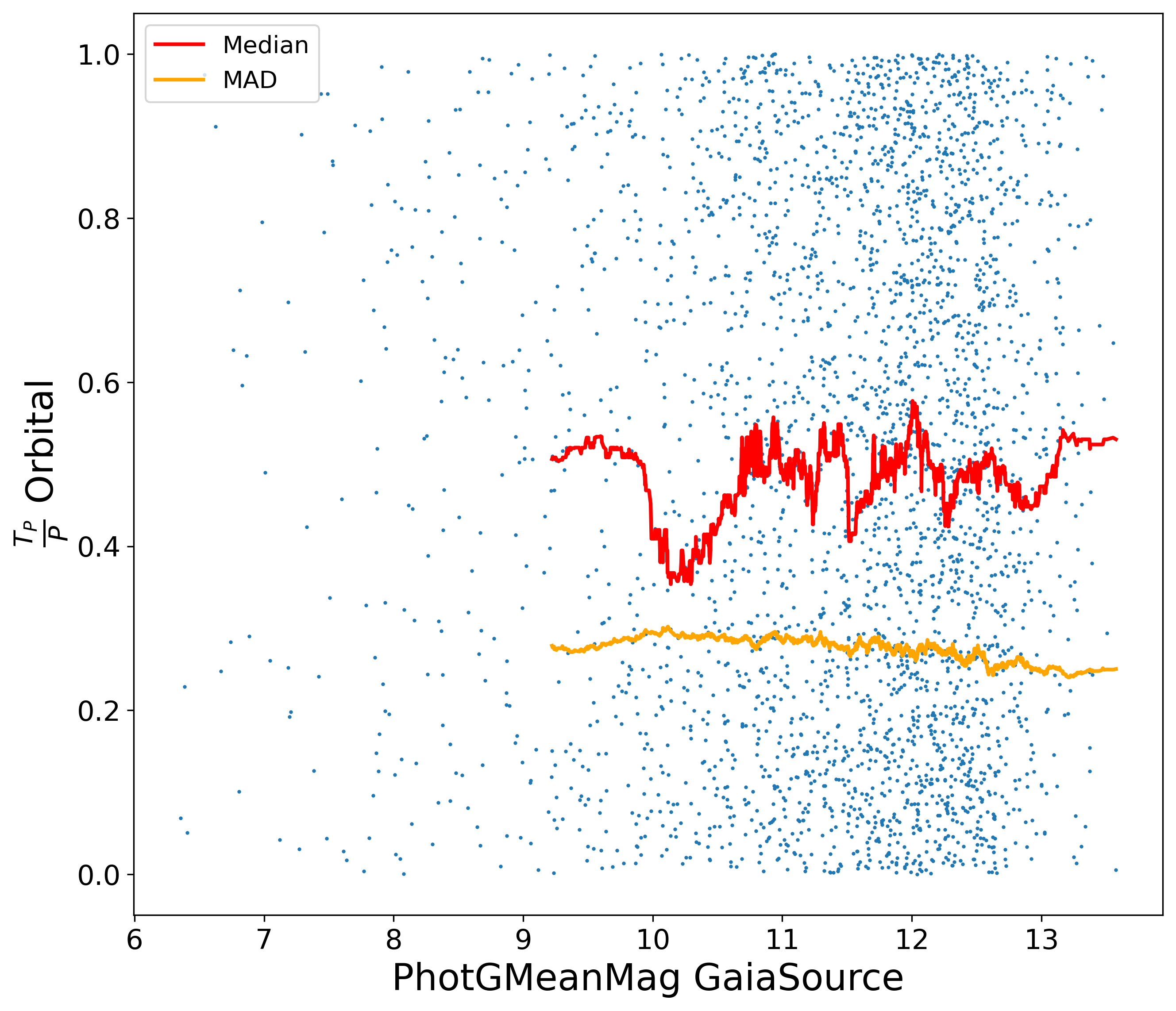7.7.5 Uncombined solutions
Beside the solutions which have been combined, it is important to note that there may be a reservoir of sources which can be combined offline. For example, there are eclipsing binaries in the vari_eclipsing_binary table that may also have a spectroscopic solution. Selecting sources in the table vari_eclipsing_binary with which are neither EclipsingBinary nor EclipsingSpectro in the nss_two_body_orbit table, one may find 1731 sources, to be compared to the 155 available eclipsingSpectro. These sources correspond to eclipsing binaries that were not processed by the Non-Single stars module. Additionally there are sources that were eligible for combination but rejected by the combination software quality criteria and have been included in their corresponding table.
There are also 3170 spectroscopic solutions and orbital solutions which have not been combined, mostly due to a significant difference in period or semi-amplitude. The Figures 7.66 and following compare the parameters of solutions which had a period consistent within , i.e. that may a priori be attributed to the same binary rather than to some ternary system. Figure 7.66 shows that within uncertainty the eccentricities are consistent while the periastron argument are more similar though more dispersed. Figure 7.67 shows that, although the ratio of the periastron epoch over period would be expected to be around 0.5 on the average, there is a drop around .



